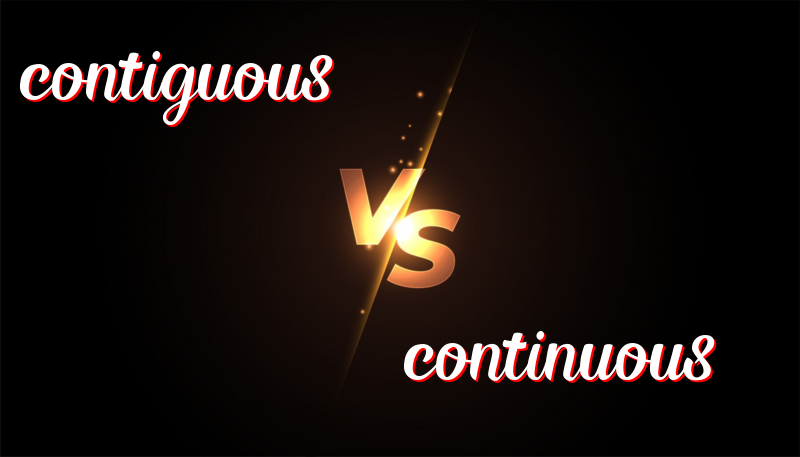Understanding the Difference: Contiguous vs. Continuous
Contiguous vs. Continuous
Introduction
The words “contiguous” and “continuous” may sound alike, but they have different meanings. Let’s learn the difference between these two words and how to use them correctly.
History
The word “contiguous” comes from the Latin word “contiguus,” which means “touching.” The word “continuous” comes from the Latin word “continuus,” which means “uninterrupted.”
What Does Contiguous Mean?
“Contiguous” means things are touching each other or next to each other.
Example Sentences
- The classrooms are contiguous, with only a wall separating them.
- The United States and Canada are contiguous countries.
- Tim placed the books in a contiguous row on the shelf.
- The two parks are contiguous, forming a large green space.
- The pieces of the puzzle are contiguous, fitting together perfectly.
What Does Continuous Mean?
“Continuous” means something goes on without stopping.
Example Sentences
- The river flows in a continuous stream.
- She studied in a continuous stretch for three hours.
- The music played continuously all night.
- A continuous line of ants marched across the floor.
- The rain was continuous, causing floods in the area.
Trick to Remember the Difference
Think of “contiguous” as having a “u” to remind you that things are up against each other, or touching. “Continuous” has an “n” to remind you that it means never-ending or without stopping.
Summary
In short, “contiguous” means touching or next to each other, while “continuous” means without a break or stop. Remembering the meanings and how they sound can help you use these words correctly in sentences.

Leave a Reply
You must be logged in to post a comment.